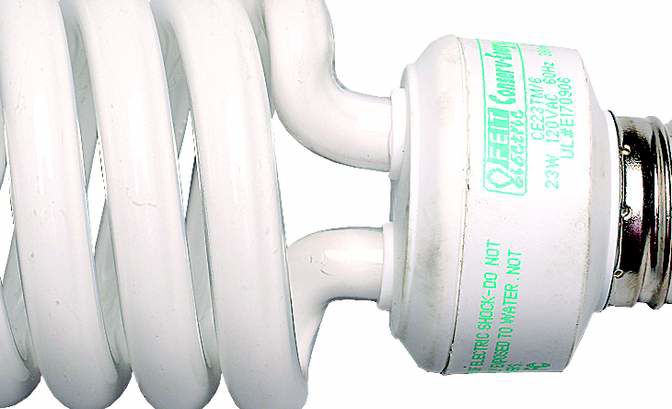Pick the best light bulb
Published 4:00 am Monday, February 22, 2010

- The Bulletin file photo
We’ve all heard that using compact fluorescent light bulbs — or CFLs — are better for the planet. And you might have heard that some traditional incandescent bulbs will be phased out of production by 2012.
But before you load up on CFLs on your next trip to the home improvement store, it’s important to know the good, the bad and the ugly about these energy-saving light bulbs.
The Good: CFLs use less energy and last a whole lot longer than traditional incandescent light bulbs. In fact, they use about 75 percent less energy and can last about 10 times longer. Those two things combined add up to a $30 savings over the life of the CFL. It’s no wonder that one in every four bulbs sold these days is a CFL.
The Bad: It’s important to note that CFLs should only be used in fixtures that stay on for long periods of time, preferably more than 15 minutes at a time. You will need a specially designed CFL if you want to use the bulb with a dimmer switch, outdoors or in a 3-way light fixture.
CFLs should also not be used in ceiling fans where the vibration can cause the bulb’s elements to fail. If CFLs aren’t used correctly, you will significantly diminish the life of the bulb and your savings.
The Ugly: All CFL bulbs contain a small amount of mercury. This includes those long tube fluorescent bulbs that are often found in work environments. Mercury is a toxic element that is particularly dangerous for young children or a developing fetus. Like other hazardous waste, used and unbroken CFLs should be taken to a qualified recycling center where the mercury can be properly handled. Home Depot and Ikea will also accept used CFLs for recycling.
If you break a fluorescent bulb in your home, you should exercise caution but there’s no need to panic. Go to the Environmental Protection Agency’s Web site, EPA .gov, to find step-by-step cleanup instructions.
Another thing to consider is that most CFL bulbs are made in China and India, where environmental controls are lax at best, and workers are undoubtedly exposed to mercury in the production process.
Plus, some of this mercury becomes airborne where it travels around the globe and is routinely measured in mountaintop cloud physics laboratories in our country and others. Most traditional incandescent bulbs are also primarily made in China, but they don’t contain dangerous and highly toxic mercury.
So what’s the “greenest” solution to help you tread lightly on the planet (and your power bill) today? A mix of incandescent and properly placed CFLs that we remember to turn off when we leave the room.
Improvements in incandescent technology may save the bulb from being completely phased out of production but looking into the future, it’s the light emitting diode (LED) bulb that will likely light the way.






